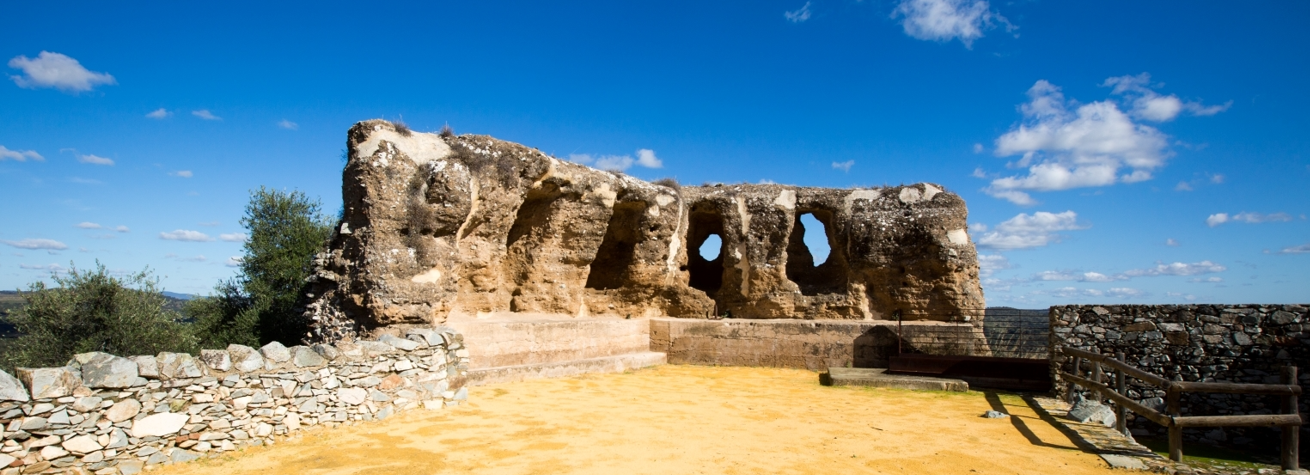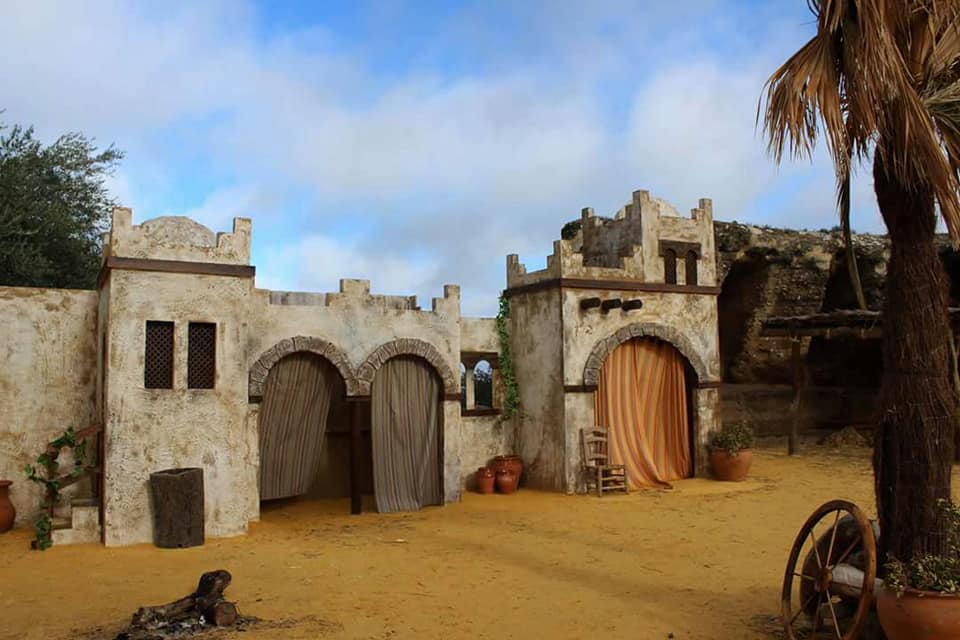Torreón del Castillo
The castle was an ancient fortress built in the late Middle Ages, conceived as a watchtower at a time of reconquest and its “guards” in the border area seem to be at the origin of its name.






The term “Las Guardas”, covered the guard services that were put in place to protect the town. Amounts were paid to pay the “guardas escuchas y atajadores de a caballo y a pie que Sevilla mandó poner en servicio del Rey” (watchmen and guards on horseback and on foot that Seville ordered to be placed in the service of the King) on the border to protect the land.
Its location, on the hill behind the church, denotes its defensive character and is the result of a complex defensive system and the military importance that El Castillo de las Guardas held during the late Middle Ages.
It was destroyed by Napoleon’s troops and nowadays, the ruins of the tower of the old Muslim castle remain, which is located in the highest part of the town centre. Given the nature of the terrain, forming concentric lines staggered in depth, it served as a link to peripheral defences in the vicinity of the capital.
After the reconquest of these territories by Ferdinand III, El Castillo de las Guardas became a municipality dependent on the city of Seville, controlling possible enemy incursions from its strategic position.
It was in the 17th century, during the reign of Charles II, that the town achieved its independence, being granted the legal status of villa by royal decree.
It is under the protection of the generic Declaration of the Decree of 22 April 1949, on the protection of Spanish castles and Law 16/1985 on Spanish Historical Heritage.
Throughout history, the Guadiamar River has been a silent witness to the passage of time through El Castillo de las Guardas, has favoured the settlement of different cultures, as attested by the numerous prehistoric sites found in the municipality.


